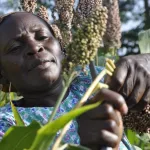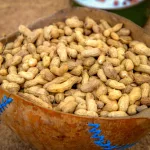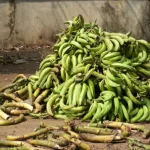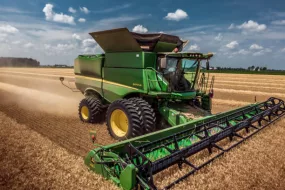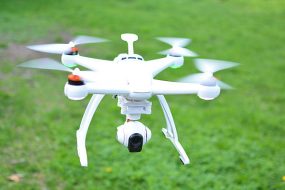Imagine a future where farmers can monitor the health of their crops with pinpoint accuracy, identifying issues before they become irreversible problems. This future is already here, thanks to the incredible technology of drones equipped with infrared cameras. In this article, we will delve into the revolutionary world of agriculture transformed by these high-tech flying machines.
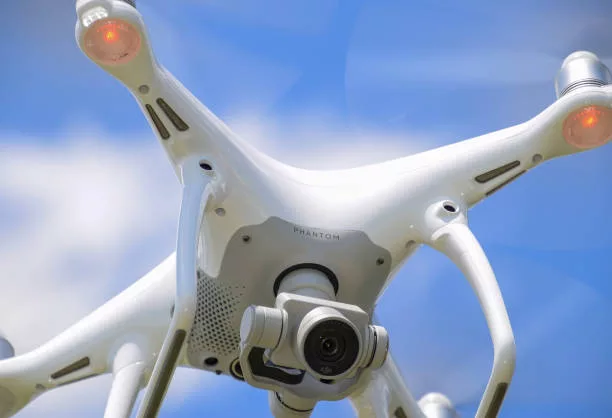
The Evolution of Agriculture
Agriculture, often regarded as the backbone of human civilization, has a rich and storied history that spans millennia. From humble beginnings to the modern, technology-driven industry we know today, the evolution of agriculture is a testament to human innovation and adaptability.
READ, ALSO >>>>> Exploring 10 Types of Drones That Are Transforming Farming And Revolutionizing Agriculture
The Dawn of Agriculture
The story of agriculture begins around 10,000 years ago in what is known as the Neolithic Era. Prior to this, our ancestors were primarily hunter-gatherers, relying on foraging for food. However, as populations grew, the nomadic lifestyle became unsustainable. In response to these challenges, early humans began to experiment with planting seeds and cultivating crops.
The Fertile Crescent, a region encompassing parts of modern-day Iraq, Iran, Syria, and Turkey, is often considered the cradle of agriculture. Here, ancient civilizations like the Sumerians and Babylonians developed early farming techniques and grew crops like wheat, barley, and lentils. They also domesticated animals, such as sheep and cattle, for food and labor.
The Agricultural Revolution
The transition from small-scale farming to organized agriculture marked a significant turning point in human history. This period, often referred to as the Agricultural Revolution, allowed communities to produce surplus food, leading to population growth and the development of more complex societies.
Key developments during the Agricultural Revolution included:
1. Crop Domestication
Early farmers selectively bred and cultivated wild plants, gradually transforming them into domesticated crops. This process led to the development of staple crops like rice, maize, and potatoes, which remain essential in global agriculture today.
2. Irrigation Systems
The need to control water for crop cultivation led to the invention of irrigation systems. Early civilizations constructed canals, ditches, and aqueducts to transport water from rivers and lakes to their fields, ensuring consistent crop yields.
3. Plows and Tools
The invention of the plow and other agricultural tools, often pulled by draft animals, increased the efficiency of farming. This mechanization allowed farmers to till larger areas of land and cultivate crops more effectively.
4. Specialization and Trade
With surplus food production, some individuals could specialize in activities other than farming. This led to the growth of trade, as agricultural surpluses could be exchanged for other goods and services, fostering economic development.
The Green Revolution
The mid-20th century saw another pivotal moment in agriculture with the advent of the Green Revolution. This period was characterized by the development of high-yielding crop varieties, increased use of fertilizers and pesticides, and improved farming practices. Led by scientists like Norman Borlaug, the Green Revolution significantly increased global food production, helping to alleviate hunger and poverty in many parts of the world.
Modern Agriculture and Technology
Today, agriculture has been transformed by technology. Modern farms are equipped with state-of-the-art machinery, GPS-guided tractors, and advanced irrigation systems. Genetic engineering has allowed scientists to create crops that are resistant to pests, diseases, and adverse weather conditions.
Precision agriculture, which utilizes data from satellites, drones, and sensors, has become a game-changer. Farmers can now monitor their fields in real time, adjusting irrigation, fertilization, and pest control with pinpoint accuracy. This not only maximizes crop yields but also reduces resource wastage, making agriculture more sustainable.
The Future of Agriculture
As we look to the future, agriculture continues to evolve. Innovations like vertical farming, hydroponics, and aquaponics offer new ways to grow crops in urban environments and address food security challenges. Sustainable farming practices, organic agriculture, and regenerative farming are gaining momentum as we recognize the importance of preserving our planet’s health.
The evolution of agriculture is a remarkable journey that has shaped human civilization. From the earliest attempts at cultivation to the modern agricultural revolution, our ability to adapt and innovate has allowed us to feed a growing global population. As we move forward, it is clear that technology and sustainability will play key roles in the future of agriculture, ensuring that we can continue to nourish our world while caring for the environment.
Enter Infrared Camera Drones
one technology that stands out as a true game-changer: is infrared camera drones. These high-tech flying machines equipped with infrared cameras have ushered in a new era of precision farming, providing farmers with invaluable insights into the health and condition of their crops. In this section, we will explore the fascinating world of infrared camera drones and their profound impact on modern agriculture.
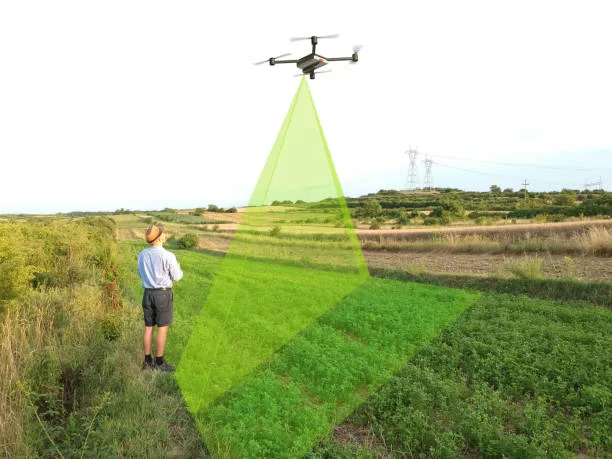
How Infrared Cameras Work
Before we delve into the applications and benefits of infrared camera drones in agriculture, let’s take a moment to understand how these cameras operate.
Infrared cameras, also known as thermal imaging cameras, work by detecting heat radiation emitted by objects. Every object with a temperature above absolute zero (-273.15°C or -459.67°F) emits infrared radiation. In the context of agriculture, this means that plants and soil emit varying levels of heat depending on their condition and moisture content.
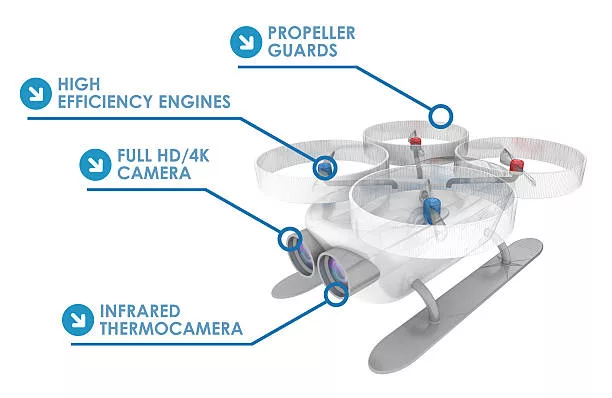
Infrared cameras capture these thermal signatures and translate them into images that highlight temperature variations. This information is crucial for farmers because it can reveal subtle differences in crop health and stress levels that are often invisible to the naked eye.
Benefits of Infrared Camera Drones in Agriculture
As agriculture is advancing, the integration of infrared camera drones has emerged as a transformative technology. These sophisticated aerial tools have brought about a multitude of benefits, revolutionizing the way farmers manage their crops and land. In this section, we will explore the substantial advantages that infrared camera drones offer to the agricultural industry.

1. Early Detection of Crop Stress
One of the most significant advantages of infrared camera drones is their ability to detect crop stress early in its development. Crop stress can result from a variety of factors, including water shortages, nutrient deficiencies, disease outbreaks, or pest infestations. These stressors can severely impact crop health and yield if left unaddressed. Infrared imaging provides farmers with a critical advantage by allowing them to identify these stress factors long before they become visible to the naked eye. This early detection enables prompt intervention, preventing widespread damage and crop losses.
2. Precision Resource Management
Infrared camera drones empower farmers with the tools for precision agriculture. By capturing detailed thermal images of their fields, farmers can pinpoint specific areas that require targeted attention. For instance, these drones can identify zones with irregular temperature patterns indicating moisture deficiencies. Armed with this information, farmers can precisely adjust irrigation systems, ensuring that each part of the field receives the appropriate amount of water. Similarly, they can tailor fertilization and pesticide application based on the specific needs of different areas, reducing resource wastage and minimizing environmental impact.
3. Time and Labor Savings
Traditionally, inspecting large agricultural fields for crop issues was a labor-intensive and time-consuming endeavor. Farmers often had to traverse extensive acreage on foot, visually scanning for signs of trouble. In contrast, infrared camera drones dramatically streamline this process. Equipped with these drones, farmers can cover vast expanses of land in a fraction of the time it would take to perform manual inspections. This time and labor efficiency allows farmers to allocate their resources more effectively, reducing operational costs.
4. Increased Crop Yields
Ultimately, the primary goal of any farmer is to maximize crop yields. Infrared camera drones play a pivotal role in achieving this objective. By detecting and addressing crop issues promptly, farmers can create optimal growing conditions for their plants. Healthier, stress-free crops are more likely to thrive and produce higher yields. This increase in productivity not only translates to improved profits for farmers but also contributes to global food security by meeting the growing demand for agricultural products.
5. Enhanced Environmental Stewardship
Infrared camera drones align with the principles of sustainable and environmentally responsible farming practices. By enabling precise resource management and early detection of crop issues, these drones minimize the need for excessive chemical treatments and water usage. This eco-friendly approach reduces the environmental footprint of agriculture, preserving the health of ecosystems and minimizing the impact on neighboring communities.
The benefits of integrating infrared camera drones into agriculture are manifold and game-changing. These aerial tools empower farmers with early detection capabilities, precision resource management, time and labor savings, and the potential for significantly increased crop yields. Furthermore, they contribute to more sustainable and environmentally conscious farming practices.
As technology continues to advance and agricultural practices evolve, infrared camera drones are poised to play an increasingly vital role in the future of agriculture. For farmers willing to embrace these innovations, the potential for higher productivity and more sustainable farming operations is boundless.
Applications of Infrared Camera Drones
In the realm of modern agriculture, the versatility of infrared camera drones has paved the way for a wide array of applications. These high-tech aerial devices equipped with thermal imaging capabilities are revolutionizing the way farmers manage their crops and make critical decisions. Here, we explore the diverse applications of infrared camera drones in agriculture:

1. Disease Detection
Infrared camera drones excel at the early detection of diseases in crops. Even before visible symptoms manifest, such as wilting leaves or discoloration, these drones can capture thermal images that reveal temperature anomalies associated with infected or stressed plants. By pinpointing disease hotspots, farmers can swiftly intervene with appropriate treatments, preventing the spread of pathogens and reducing crop losses.
2. Irrigation Management
Efficient water management is a cornerstone of successful farming. Infrared camera drones are invaluable tools for optimizing irrigation practices. By analyzing thermal images, farmers can identify areas of their fields that are not receiving sufficient moisture. This information enables precise adjustments to irrigation systems, ensuring that each part of the field receives the appropriate amount of water. As a result, crops flourish with adequate hydration, resource usage is minimized, and water conservation practices are enhanced.
3. Pest Control
Infrared camera drones play a crucial role in pest management. They can identify pest infestations early by detecting temperature variations caused by the presence of pests. Armed with this information, farmers can target specific areas with pest control measures, reducing the need for widespread chemical applications. This approach not only saves resources but also promotes more eco-friendly farming practices by preserving beneficial insects and minimizing the environmental impact.
READ, ALSO >>>>> Exploring 10 Types of Drones That Are Transforming Farming And Revolutionizing Agriculture
4. Crop Health Assessment
Beyond identifying specific issues, infrared camera drones provide a holistic view of overall crop health. By continuously monitoring temperature variations and stress levels in the field, farmers gain valuable insights into the progress of their crops. This data allows them to make informed decisions regarding the timing of key agricultural activities, such as harvesting and fertilization, to maximize yield and quality.
5. Precision Fertilization
Infrared camera drones enable precision fertilization by identifying areas of the field with varying nutrient levels. The thermal images captured can reveal nutrient deficiencies or excesses, allowing farmers to tailor their fertilization strategies accordingly. This targeted approach optimizes nutrient uptake by crops, enhances soil health, and reduces fertilizer waste.
6. Moisture Management in Greenhouses
Infrared camera drones are also beneficial for greenhouse agriculture. They can monitor temperature and moisture levels in greenhouses, ensuring that the controlled environment remains conducive to plant growth. Any anomalies in temperature or humidity can be quickly addressed to maintain optimal growing conditions.
7. Livestock Management
In addition to crop-related applications, infrared camera drones can be utilized for livestock management. Farmers can use thermal imaging to monitor the health and well-being of their animals, identifying issues such as illness or injury. This proactive approach allows for timely veterinary care and contributes to improved animal welfare.
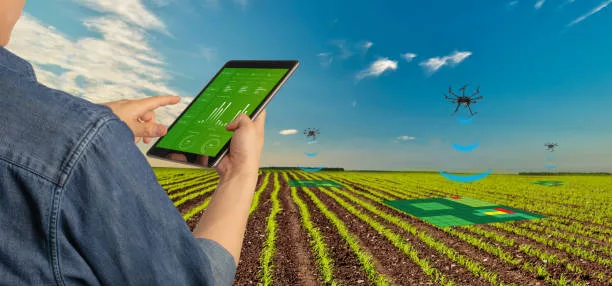
8. Environmental Impact Assessment
Infrared camera drones can assess the environmental impact of farming practices. By capturing thermal images of fields, they can detect heat emissions from agricultural operations, such as irrigation pumps or equipment. This data can inform decisions aimed at reducing energy consumption and minimizing the carbon footprint of farming operations.
The applications of infrared camera drones in agriculture are diverse and transformative. These aerial tools provide farmers with real-time data and insights that were once unattainable. From disease detection to precision resource management and beyond, the integration of thermal imaging technology into farming practices is ushering in a new era of efficiency, sustainability, and enhanced crop yields. As the agricultural landscape continues to evolve, infrared camera drones will remain indispensable allies to farmers seeking to optimize their operations and contribute to a more sustainable future.
Getting Started with Infrared Camera Drones
If you’re a farmer eager to harness the potential of infrared camera drones to revolutionize your agricultural practices, getting started is an exciting and rewarding journey. These high-tech aerial tools can provide invaluable insights into your crops’ health and conditions. Here’s a step-by-step guide to help you embark on this innovative path:
1. Research and Choose the Right Drone
The first and crucial step is to research and select the right drone for your agricultural needs. Not all drones are created equal, and you’ll want one specifically designed for agricultural applications. Consider the following factors:
- Camera Quality: Ensure that the drone’s thermal imaging camera offers high-resolution images for precise analysis.
- Flight Time: Longer flight times allow for more extensive coverage of your fields without frequent recharging.
- Ease of Use: Look for a drone with user-friendly controls and software that align with your technical proficiency.
- Compatibility: Ensure that the chosen drone is compatible with the software and systems you plan to use for data analysis.
2. Learn the Technology
Familiarize yourself with the technology behind infrared cameras and thermal imaging. Understanding how these cameras work and how to interpret the thermal data they provide is essential. Many drone manufacturers offer training programs or resources to help users become proficient in using their equipment effectively.
3. Plan Your Missions
Determine your specific goals and objectives for using infrared camera drones in your agricultural practices. Common missions include:
- Disease Detection: Identify areas of your field that may be affected by diseases or stress factors.
- Irrigation Management: Monitor soil moisture levels and assess the efficiency of your irrigation systems.
- Pest Control: Detect and target areas with pest infestations to minimize their impact.
- Crop Health Assessment: Gather data to make informed decisions about when to harvest and optimize crop yields.
Consider creating a mission plan that outlines the areas you’ll survey, the frequency of flights, and the specific data you aim to collect during each mission.
4. Invest in Quality Software
In addition to the drone itself, invest in quality software for data analysis and interpretation. Some drones come with proprietary software, while others may require third-party applications. Ensure that the software allows you to process and visualize thermal images effectively, helping you make informed decisions about your crops.
5. Stay Informed
The world of agricultural technology is continually evolving. Stay informed about the latest advancements and updates in drone technology for agriculture. Join online forums, attend workshops or webinars, and connect with fellow farmers or experts in the field. Continuous learning will help you make the most of this powerful tool.
6. Seek Training and Support
If you’re new to drone technology or thermal imaging, consider seeking formal training or guidance. Many agricultural extension services, agricultural universities, and drone manufacturers offer training programs tailored to agricultural applications. Training can help you maximize the benefits of your investment and ensure safe and effective operation.
7. Start Small and Scale Up
As you begin integrating infrared camera drones into your agricultural practices, it’s a good idea to start with a manageable scope. Choose a specific mission or area of your farm to focus on initially. As you become more comfortable with the technology and its applications, you can gradually expand your drone usage to cover larger areas and address a broader range of farming challenges.
8. Maintain Your Drone
Proper maintenance is essential to ensure the longevity and reliability of your drone. Regularly inspect and clean the drone and camera to prevent dust or debris from affecting image quality. Follow the manufacturer’s maintenance guidelines and schedule for routine check-ups and servicing.
Getting started with infrared camera drones in agriculture involves careful research, training, and planning. With the right equipment, knowledge, and approach, you can leverage this technology to transform your farming practices. As you gain experience and witness the benefits firsthand, you’ll be on your way to reaping the rewards of improved crop yields, resource efficiency, and sustainable agriculture.
In conclusion, drones with infrared cameras are a game-changer in the field of agriculture. They empower farmers with real-time data, allowing for proactive decision-making and ultimately leading to increased crop yields. As this technology continues to evolve, it holds the promise of making agriculture more sustainable and efficient than ever before. If you’re a farmer, embracing this technology could be the key to a more prosperous and eco-friendly future.
So, what are you waiting for? Join the agricultural revolution with infrared camera drones and watch your crop yields soar!
READ, ALSO >>>>> Exploring 10 Types of Drones That Are Transforming Farming And Revolutionizing Agriculture



